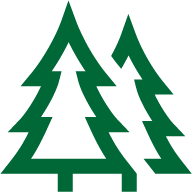
Tree Care Basics: A Starter Guide
Identifying Signs of Deadly Tree Diseases: What You Need to Know
Johnni Knight
Trees are not only beautiful additions to our landscapes but also vital contributors to our environment. However, like all living organisms, trees are susceptible to diseases that can threaten their health and survival. Some tree diseases are relatively benign, causing minor, aesthetic issues or temporary setbacks. However, others can be deadly, posing a significant risk to the affected tree and neighboring vegetation. Recognizing the signs of deadly tree diseases is crucial for prompt intervention and mitigation.
Sudden and Severe Leaf Discoloration
Sudden and severe leaf discoloration, particularly if it affects a large portion of the tree's canopy, can signify a deadly disease. Discolored leaves may appear yellow, brown, or black, indicating underlying health issues such as fungal infections, bacterial diseases, or nutrient deficiencies. Pay close attention to any rapid changes in leaf coloration, as they may signal a serious problem that requires immediate attention.
Premature Leaf Drop
Premature leaf drop, or the shedding of leaves before the onset of fall, is another concerning sign of tree disease. While it's normal for trees to shed leaves in the autumn, premature leaf drop outside the typical seasonal cycle can indicate stress or disease. If your tree is losing leaves unexpectedly and excessively, it may be a warning sign of a deadly disease affecting its health and vitality.
Unusual Growth Patterns or Dieback
Trees affected by deadly diseases may exhibit unusual growth patterns or dieback in their branches and foliage. Look for signs of stunted growth, distorted leaves, or branches that appear weak, brittle, or dead. Dieback occurs when the tips of branches or entire tree sections gradually wither and die due to disease-related damage to the vascular system. If you notice extensive dieback in your tree, it may suffer from a serious disease requiring immediate attention.
Fungal Growth or Conks
Fungal growth or conks (fruiting bodies) on a tree's trunk, branches, or roots are strong indicators of fungal infections or decay. Fungi thrive in moist, humid environments and can rapidly spread throughout the tree's internal tissues, compromising its structural integrity and vitality. If you observe any fungal growth or conks on your tree, it's essential to take immediate action to assess the extent of the infection and implement appropriate treatment measures.
In conclusion, recognizing the signs of deadly tree diseases is essential for protecting your trees' health and longevity. Prompt diagnosis and treatment by a certified arborist or tree care professional are crucial for mitigating the impact of deadly diseases and preserving your trees' beauty and vitality for years to come.
Learn more from a company near you like Daughtry Tree Service.
Share

Proper tree care is an essential part of maintaining your property's appearance and overall well-being. After all, neglected trees can quickly become safety hazards if limbs should fall and damage your property. That's why it's important that you know how to take care of your trees. Luckily, this site is here to help. With the information on this site, you'll be able to better understand the different needs of each type of tree on your land. That way, you can tailor your tree care accordingly and you'll know when you should call a tree service for more help and ongoing care.
-
Why You Should Hire a Tree Company for Your Property 17 July 2024